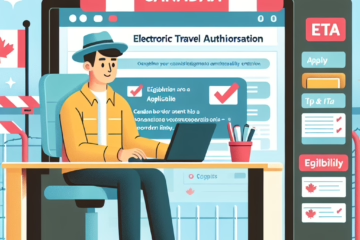Table of contents
- I. Introduction to Canadian Immigration Policy
- II. Economic Immigration Programs
- III. Legislative and Regulatory Complexity
- IV. Economic Class Legal Basis
- V. General Requirements for Economic Classes
- VI. Express Entry System
- VII. Arranged Employment in Express Entry
- VIII. Federal Skilled Worker Program
- IX. Other Programs
- Point System in Canadian Immigration
- How the Point System Works
- Federal Skilled Trades Program (FSTP)
- VI. Canadian Experience Class (CEC)
I. Introduction to Canadian Immigration Policy
The Immigration and Refugee Protection Act (IRPA) outlines Canada’s immigration policy, emphasizing economic benefits and supporting a strong economy. Key objectives include:
- Maximizing social, cultural, and economic benefits of immigration.
- Supporting a prosperous Canadian economy with shared benefits across all regions.
- Prioritizing family reunification in Canada.
- Encouraging the integration of permanent residents, acknowledging mutual obligations.
- Facilitating entry for visitors, students, and temporary workers for various purposes.
- Ensuring public health and safety, and maintaining security.
- Collaborating with provinces for better recognition of foreign credentials and faster integration of permanent residents.
Amendments have been made over the years to economic processing categories and criteria, particularly in economic and business immigration. Provinces and territories now play a significant role in immigration to boost local economies.

II. Economic Immigration Programs
Canada’s economic immigration includes programs like:
- Federal Skilled Worker Program (FSWP)
- Canadian Experience Class (CEC)
- Federal Skilled Trades Program (FSTP)
- Business Immigration Programs (including Start-Up Business Class and Self-Employed Persons Program)
- Quebec Economic Classes
- Provincial Nominee Programs (PNPs)
- Atlantic Immigration Pilot Program and Atlantic Immigration Program
- Rural and Northern Immigration Pilot Program
- Caregiver Classes
Despite some criticism, especially of the investor category, these programs have generally been beneficial to Canada’s economy. For example, the Immigrant Investor Program was estimated to contribute around $2 billion. However, due to concerns about fairness, the government ended the Investor and Entrepreneur Programs in 2014.
III. Legislative and Regulatory Complexity
The legislative and regulatory framework for immigration is complex and not always easy to navigate. Immigration, Refugees and Citizenship Canada (IRCC) provides information online, but finding specific details can be challenging. The framework includes the IRPA, regulations, manuals, program instructions, pilot projects, bilateral agreements, and more. Applicants must demonstrate that they meet all requirements, which is often a challenging and documentation-intensive process.
IV. Economic Class Legal Basis
The legal basis for selecting economic class immigrants focuses on their potential to become economically established in Canada. Those acquiring permanent residence under economic streams traditionally contribute significantly to the Canadian economy.
V. General Requirements for Economic Classes
Economic immigration classes follow two primary processing routes:
Express Entry
- For the Canadian Experience Class, Federal Skilled Worker Program, Federal Skilled Trades Program, or certain Provincial Nominee Programs.
- Applicants must first be invited to apply for permanent resident status.
Direct Application
- For specific programs like Provincial Nominee Program, Quebec Economic Classes, Self-Employed Persons Program, etc.
- Direct applications for consideration of permanent resident status.
All applicants must meet eligibility criteria and admissibility standards (security, medical, etc.). Family members, whether accompanying or not, must also meet these criteria.
National Occupational Classification
- Crucial for applicants seeking permanent resident status.
- Categories jobs based on training, education, experience, and responsibilities.
- Informs employment offers, work experience assessment, and immigration application review.
Dependent Children
- Includes children under 22 or older if financially dependent due to physical or mental conditions.
- The age of dependent children is “locked in” at the application submission stage.
Supporting Documentation
- Extensive documentation required, including language test results, identity documents, financial statements, and more.
- All documents must be properly translated and submitted as per the checklist provided by IRCC.
Medical Exam
- Mandatory for all applicants, conducted by designated physicians.
- Required for both principal applicants and family members.
Interview
- May be required to verify or clarify application details.
- Original documents must be presented and authenticity is verified.
VI. Express Entry System
Introduced in 2015, Express Entry replaced the older first-come, first-served system for permanent residence applications in several programs. It involves:
- Creating an online profile.
- Being ranked in the Comprehensive Ranking System (CRS).
- Receiving an Invitation to Apply (ITA) based on CRS score.
Points are awarded for factors like skills, experience, spouse’s credentials, job offers, etc. The process includes regular rounds of invitations with specified criteria for each draw.
VII. Arranged Employment in Express Entry
Additional CRS points are awarded for a qualifying job offer. Criteria for arranged employment points vary based on the job level and the nature of the job offer.
VIII. Federal Skilled Worker Program
This program assesses applicants based on age, education, work experience, language ability, and other factors. A point-based system is used, with a minimum score required for eligibility.
IX. Other Programs
Federal Skilled Trades Program
- For skilled trade workers, with specific eligibility requirements and no point system.
Canadian Experience Class
- For those with work experience in Canada, focusing on language proficiency and work experience in specific NOC categories.
Each program has distinct eligibility requirements, emphasizing Canada’s goal to benefit from immigration economically, socially, and culturally.
Point System in Canadian Immigration
The point system, introduced in the Immigration Act of 1976, is a method used by Canada to assess independent immigrants. It aims to ensure fairness and consistency in the selection process by minimizing discretion and potential discrimination.
Key Updates to the Point System (2013)
- Prioritizing Younger Workers: Greater emphasis is placed on younger applicants.
- Language Proficiency: A strong focus on fluency in official languages (English and French) is essential, with a minimum proficiency requirement.
- Canadian Work Experience: Points are awarded for having work experience in Canada.
- Spouse’s Language Proficiency and Work Experience: Additional points if the applicant’s spouse is fluent in official languages and/or has Canadian work experience.
How the Point System Works
- Immigration officers assign points based on various selection criteria.
- The Minister sets the pass mark, or the minimum point requirement, which can be adjusted as per economic and social needs.
- The current pass mark is 67 points out of a possible 100, based on six selection factors.
Six Selection Factors
- Education
- Language Proficiency in English and French
- Work Experience
- Age
- Arranged Employment in Canada
- Adaptability
Points are allocated to assess the applicant’s potential for economic establishment in Canada.
Arranged Employment (10 Points)
- Defined as a permanent job offer in Canada that is approved by IRCC or ESDC.
- Occupation must be in NOC TEER 0, 1, 2, or 3.
- Assessed based on the applicant’s ability to perform and accept the job duties.
- Proof of a valid job offer is required, typically an LMIA, unless exempted under specific conditions.
- Full 10 points are awarded if the applicant meets certain conditions, including having a positive LMIA or being in Canada with a valid employer-specific work permit and a permanent job offer.
Adaptability (Up to 10 Points)
- Factors contributing to the applicant’s successful integration into Canadian society are
considered. These include language proficiency, prior work or study in Canada, presence of family members in Canada, and arranged employment.
- Points are awarded for each adaptability factor, with a maximum of 10 points combined.
Settlement Funds Requirement
- Applicants must demonstrate sufficient funds for settlement in Canada unless they have points for a qualifying arranged employment offer and are currently working or authorized to work in Canada.
- The required amount depends on the family size, as outlined on the IRCC website.
Federal Skilled Trades Program (FSTP)
The FSTP is designed for foreign nationals skilled in specific trades. Unlike the Federal Skilled Worker Program, the FSTP does not use a point system.
Eligibility Requirements
- Language Proficiency: Must meet minimum language requirements in English or French.
- Work Experience: At least two years of full-time work experience (or equivalent part-time) in a skilled trade within the five years before applying.
- Employment Requirements: Must meet employment requirements of the skilled trade as per the NOC, except for the need for a qualification certificate.
- Offer of Employment: Must have a full-time job offer for at least one year or a certificate of qualification from a Canadian authority.
- Intention to Reside Outside Quebec: Quebec has its own immigration agreement with the federal government.
VI. Canadian Experience Class (CEC)
The Canadian Experience Class (CEC), established in 2008, offers a pathway to permanent residency for foreign nationals with work experience in Canada. This program aligns with several objectives of the Immigration and Refugee Protection Act (IRPA), focusing on enhancing Canada’s social, cultural, and economic fabric. Key points include:
Eligibility Criteria:
- Applicants must have at least 12 months of full-time (or equivalent part-time) work experience in Canada within the past three years.
- Work experience should be in occupations listed in skill type 0 or skill levels A or B of the National Occupational Classification (NOC).
- Applicants must meet language requirements, with proficiency evaluated by a designated organization.
- Work Experience Considerations:
- Work experience while studying or self-employment may not qualify.
- Officers review the work experience’s nature to confirm if it meets CEC requirements.
- Vacation periods and time worked abroad are factored into the qualifying work experience period.
- Language Proficiency:
- Mandatory language testing in English or French.
- Language proficiency must meet specific Canadian Language Benchmark (CLB) or Niveau de compétence linguistique canadien (NCLC) levels based on the NOC category of the work experience.
- Application Process:
- CEC applications are processed based on clear criteria and prompt processing standards.
- Applicants from Quebec are not eligible under the CEC, as Quebec has its own immigration programs.
- Provincial Nominee Program (PNP) Alignment:
- The CEC complements provincial and territorial immigration goals, with provinces nominating individuals based on their potential to contribute economically and integrate into the local community.
A. Work Experience
For CEC eligibility, a foreign national must have substantial Canadian work experience. This experience is evaluated on various factors:
- Full-Time Work Calculation:
- Either 15 hours per week for 24 months or 30 hours per week for 12 months.
- The nature of the work must align with the responsibilities and duties outlined in the NOC descriptions.
- Implied Status Consideration:
- Work experience gained under implied status is counted if it aligns with the original work permit’s conditions.
- Employment Status Verification:
- Officers assess if the applicant was an employee or self-employed, considering factors like autonomy in work, ownership of tools, and financial risks involved.
B. Language Proficiency
Language proficiency is a crucial element for CEC applicants, assessed through designated testing agencies:
- Testing Agencies:
- English: IELTS and CELPIP.
- French: TEF and TCF.
- Test results should be less than two years old.
- Language Thresholds:
- Varies based on the NOC category of the work experience.
- CLB 7 for higher skill level jobs and CLB 5 for others.
Learn more about the economic class of immigration on our next Blog– What is Canadian Economic class of immigration?|Part 2 !



0 Comments